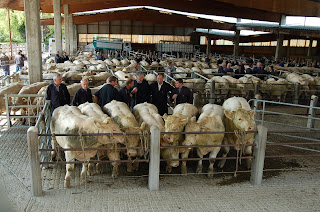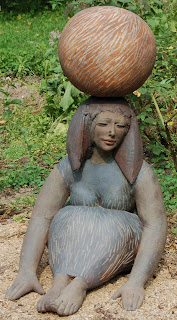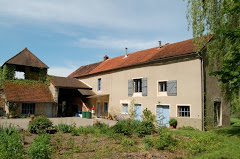Delivering post can be quite tricky in a country like France. Apart from big towns and cities, smaller towns, and certainly villages and hamlets in the Campagne do not have street names, let alone house numbers. A village like Cormatin was given street names about two years ago; however house numbers still do not exist.

Whether one has the courtesy to inform friends and relations that the address “Bourg 71460 Cormatin” can be replaced by e.g. "Rue de la Sablière, 71460 Cormatin” is entirely up to this person. Most of the 500 inhabitants in Cormatin still live, as far as the addresses on their letters are concerned in the “Bourg” (bourg = village, town). The only people with a proper address are the ones who live in house with a name, such as “La Filatiere, 71460 Cormatin”. And although Cormatin now has street names, the online telephone directory still gives all inhabitants the same address “Bourg”. When one clicks on the “town map” option, all Cormatinois live in the same house, indicated with a star somewhere in the middle of the high street.
Hamlets like Chazelle do not even have street names. Hence everybody lives in “Chazelle, 71460 Cormatin”, again with the exception of those living in a house with a name, e.g “La Tuilerie de Chazelle”.
The postal code is not much use either; 71460 is an area with a radius of approx. 15 km, with 34 communes. And each commune has a handful of hamlets as well.
This system, or lack there of, has serious consequences for the Postal service. The lady who drives around like a lunatic in her little yellow car delivering mail (we estimate that she delivers in approx. 30 villages and hamlets) must know everybody by name! Hence it is obligatory to have your name displayed on your letter box.

As a consequence, whenever our Post lady is going on holiday, she always drives around with her temporary replacement sitting next to her for at least a week, in order for him or her to learn names and addresses by heart.
Is not it amazing, that (as far as we know) hardly any letters get lost? The only problem we have encountered in the beginning was how the French look at, in their eyes, strange names. All my official mail is addressed to “Cornelis van Halderen”, and in a nearby village of Ameugny another Durtchman lives with the name “Cornelis van X”. One day the post lady had to deliver a letter to this “Cornelis van X”, stopped reading at “Cornelis van”, and since we were first on her route, decided that there was only one “Cornelis van” in 71460. We solved this the next day, by handing over the letter to her, but whether this had been a one off or not, of course we do not know…..
The website of La Tuilerie de Chazelle














